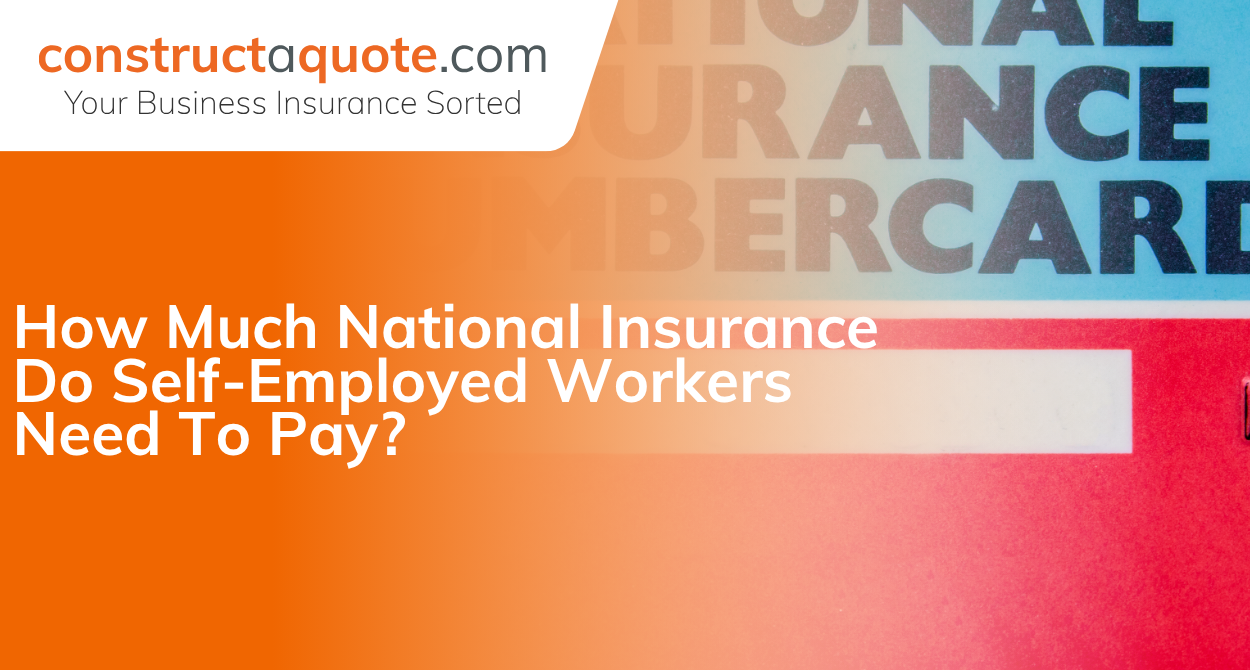by constructaquote - 23 February 2018


Being self-employed comes with a whole host of challenges, and it’s common for business owners to find themselves becoming a ‘jack of all trades’. While it helps to have an accountant, many self-employed people will choose to do their accounts themselves. Either way, understanding how much National Insurance contribution (NICs) you need to pay is essential when managing your finances.
In this post, we’ll explain the self-employed National Insurance rates for 2017/2018, and how they should be paid…
You do not have to pay national insurance contributions if:
Generally, there are two different classes of national insurance contributions for Self-employed people, these are Class 2 and Class 4.
The Government is scrapping Class 2 NICs to simplify the national insurance process for everyone who is self-employed. Although this was initially planned to take place in April 2018, the government has responded to concerns regarding poorest self-employed people that would be left worse off as a result and have decided to leave the national insurance structure as it is for at least one year.
For now, self-employed people must pay both Class 2 and Class 4 National Insurance contributions unless they are exempt.
There are different rates for NICs, these are Class 2 and Class 4. The rates for the 2017/2018 tax year are as follows:
Class 2 is a fixed amount of £2.85 a week and is only charged if your annual profits are £6,025 or more.
Class 4 NICs are only charged if your profits are £8,164 or more a year. Class 4 is charged at a rate of 9% on profits between £8,164 and £45,000, and 2% on profits over £45,000.
Most people will pay their NICs through self-assessment – a system HM Revenue and Customs (HMRC) uses to collect Income Tax.
You must tell HMRC when you become self-employed as a sole trader or partnership and register for self-assessment and Class 2 National Insurance as soon as you start your business.
You must file your tax return and pay your tax bill by 31st of January for every year you are self-employed.
Some self-employed people don’t pay NICs through self-assessment but instead, choose to make voluntary contributions. This is usually because the self-employed person was:
Having gaps in your NICs could affect the amount of state pension you receive and paying voluntary contributions could fill any gaps. You can usually only pay for gaps in your NICs record from the past six years, however, in some cases, you can pay for gaps from before the last six years depending on your age.
You can find out more about your national insurance record here.

by Charlotte Houghton - 7 October 2020
by constructaquote - 6 October 2020
by Charlotte Houghton - 29 September 2020
by Charlotte Houghton - 24 September 2020